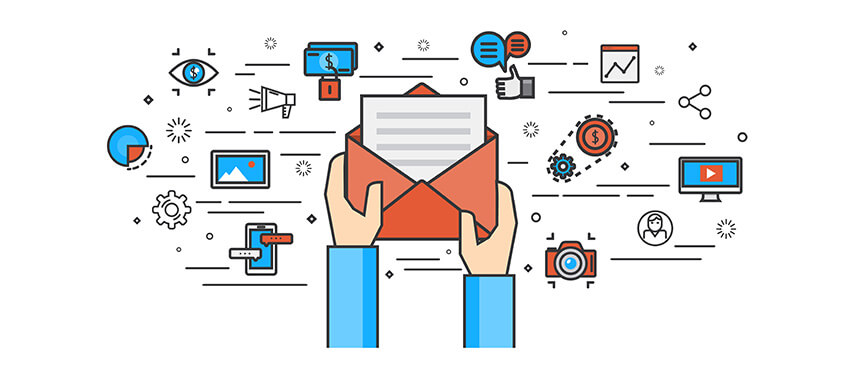Cookies Crumbling: The Art of Thriving in a Post-Third-Party Cookie World (with CDPs)

In the ever-evolving landscape of digital marketing, one topic that has been causing ripples of concern among marketers and advertisers is the depreciation of third-party cookies. For years, these tiny bits of code have played a crucial role in tracking user behaviour and targeting ads with remarkable precision. However, with privacy concerns taking centre stage, tech giants like Google have announced their intention to phase out third-party cookies in favour of more privacy-centric approaches. So, what does this mean for marketers and organisations, and how can you adapt to this new reality?
The Demise of Third-Party Cookies
Third-party cookies have long been the workhorses of online advertising. They allowed advertisers to track users across websites, gather data on their interests, and serve them with highly targeted ads. This level of precision not only boosted conversion rates but also helped maximise ROI for marketing campaigns. However, the extensive use of third-party cookies raised concerns about user privacy and data security, leading to stricter regulations such as GDPR and CCPA.
With increasing public awareness and concerns about data privacy, tech companies are rethinking their data collection practices. In January 2020, Google announced its intention to phase out third-party cookies in its Chrome browser by 2022. This move has sent shockwaves through the digital marketing industry and business world.
A Little More Background:
From cookies to DMPs to CDPs
The journey of data management in digital marketing began with the humble third-party cookie, which allowed advertisers to track user behaviour across the web. These cookies were the foundation of targeted advertising for years but raised privacy concerns, leading to their eventual depreciation.
As third-party cookies faced scrutiny, Data Management Platforms (DMPs) emerged as a solution. DMPs enabled businesses to aggregate and analyse data from various sources, helping marketers gain insights into audience segments and preferences. However, they couldn’t fulfil the growing need for true customer-centricity and personalised experiences. DMPs also relied on cookies as a main data source and key customer identifier.
This brings us to the era of Customer Data Platforms (CDPs). CDPs represent the pinnacle of data management evolution, offering comprehensive customer data unification, segmentation, and activation capabilities. Unlike cookies and DMPs, CDPs prioritise first-party data and enable businesses to create tailored, privacy-compliant experiences. In a cookieless world, CDPs have become the cornerstone of modern marketing, ensuring that data remains a powerful asset while respecting user privacy.
Although Google has now pushed the third-party cookie phase-out to 2024, planning to depreciate third-party cookies for 1% of Chrome users in the first quarter phasing them out completely by the end of the year, businesses need to take action now not only for a seamless transition, but also to start leveraging and capitalising on their customer data more effectively now.
Time is of the essence. Customer data strategies require evaluation and elevation, alternative ways to reach target audiences need to be developed and CDPs deserve to be at the forefront.
Timeline showing evolution of data management: from cookies > DMP > CDP
Adapting to a Cookieless World
While the deprecation of third-party cookies may seem like a setback for marketers, it’s also an opportunity to evolve and innovate, especially with the help of Customer Data Platforms (CDPs).
Here’s how CDPs can play a pivotal role in audience and customer data management in a post-third-party cookie world:
- Embrace First-Party Data: CDPs excel at collecting and unifying first-party data from various touchpoints. This means you can continue to understand your audience without relying on third-party cookies.
- Audience Segmentation: Segment your audience effectively using the rich data stored in your CDP. This allows you to tailor your marketing messages to specific customer groups, increasing the relevance of your campaigns.
- Personalise Experiences: With a comprehensive view of your customers’ data, CDPs empower you to deliver highly personalised experiences, even in a cookieless
- Data Privacy and Compliance: CDPs provide robust data governance features, helping you maintain compliance with data privacy regulations and ensuring transparent data collection practices.
- Contextual Targeting: Collaborate your CDP with contextual targeting strategies to serve ads that are relevant to the content of the page, making up for the loss of user behaviour tracking.
- Diversify Your Marketing Mix: Rely less on targeted ads and explore other marketing channels like email marketing, influencer partnerships, and content marketing. Your CDP can help you unify customer data across these channels for a holistic approach.
- Explore Alternative Technologies: Stay abreast of emerging technologies like Federated Learning of Cohorts (FLoC) by Google or Unified ID 2.0 and assess how your CDP can integrate with these solutions.
The depreciation of third-party cookies represents a significant shift in the digital marketing landscape. However, it’s not the end of effective online advertising; it’s an opportunity to adapt and innovate, with CDPs at the forefront of this transformation. By leveraging the power of CDPs, marketers can continue to connect with their audiences in a more personalised yet privacy-conscious and ethical manner. As the cookie crumbles, those who evolve with and leverage CDPs will thrive in this new era of digital marketing and customer engagement.







